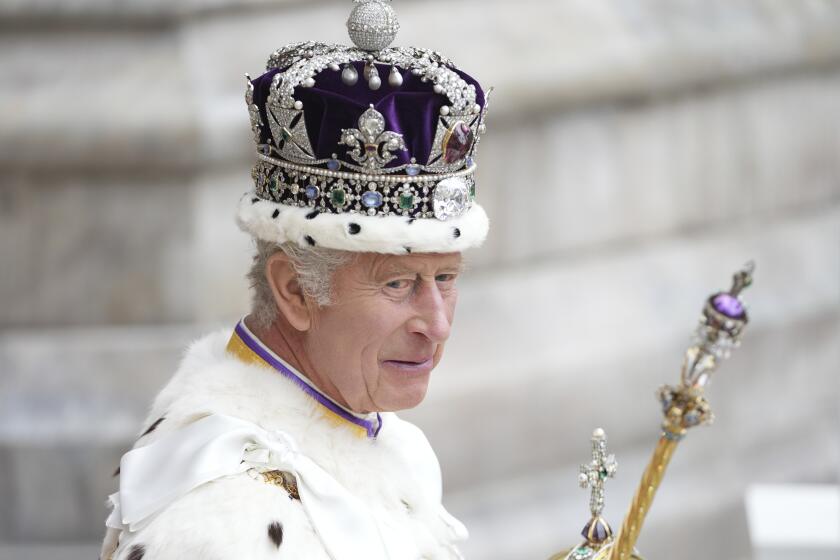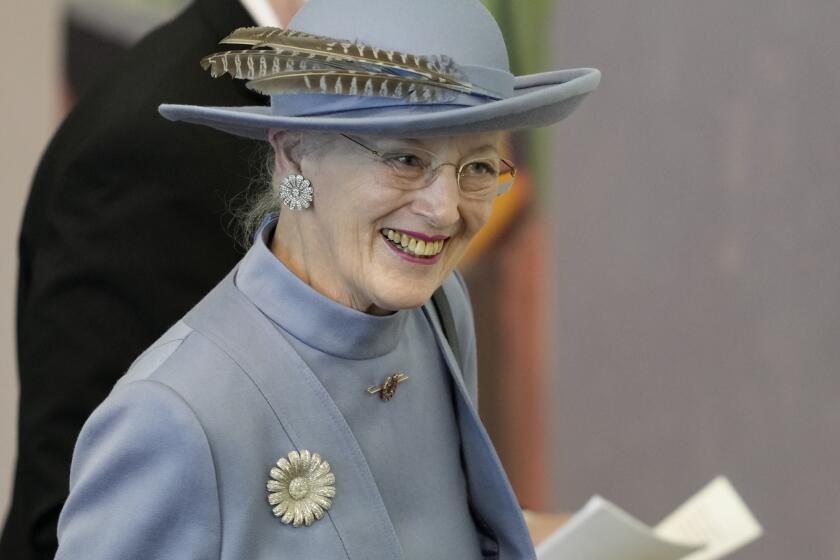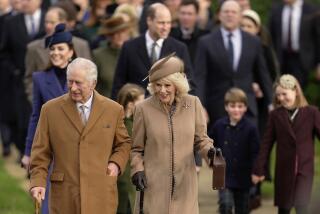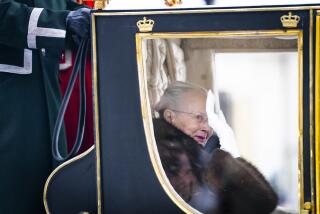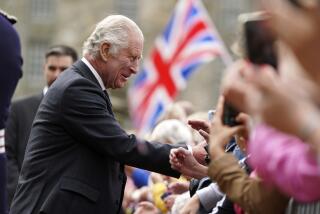Sweden’s king marks 50 years on the throne, the country’s longest reign

- Share via
STOCKHOLM — Sweden’s King Carl XVI Gustaf celebrates his golden jubilee Friday, marking 50 years since he ascended the throne Sept. 15, 1973.
He is the longest-reigning king in the history of the Swedish monarchy, which dates back more than 1,000 years.
Here are five things to know about the 77-year-old king and the monarchy in Sweden.
Don’t believe the numerals
King Carl Gustaf uses the Roman numeral XVI to show that he is the 16th king named Carl to reign in Sweden.
Except he isn’t.
Centuries ago, Swedish kings based their regnal numbers on a list of sovereigns that was partly made up. To make the kingdom’s history seem longer and more interesting, mythical kings were added to the list, including six named Karl or Carl.
The year-old reign of Britain’s King Charles III has been marked by continuity with the example and legacy of his late mother, Queen Elizabeth II.
As a result, the early 17th century monarch who should have been named Karl III instead became Karl IX.
Counting only people who actually existed, the current king would be the 10th — not the 16th — Carl/Karl on the Swedish throne.
The king has no formal powers
He has multiple castles, gleaming medals and plenty of wealth, just like his ancestors. But unlike kings of old, Carl Gustaf has no say in how the country is run.
The monarch’s powers have been stripped away gradually over the years. A constitutional change that took effect in 1975 reduced the king to a figurehead with ceremonial duties.
As Sweden’s head of state, the king receives foreign dignitaries, represents Sweden on state visits abroad and presents awards including the Nobel Prizes. He opens parliament once a year and chairs councils with Cabinet ministers and lawmakers but doesn’t make any political decisions. He also serves as the grand master of various royal chivalry orders.
Polls show a clear majority of Swedes support the monarchy even though it doesn’t fit neatly with the egalitarian principles of modern Swedish society.
Denmark’s popular monarch Queen Margrethe is marking 50 years on the throne with low-key events.
Where are the queens?
Female rulers are rare in the history of Europe’s monarchies and Sweden is no exception. Only two queens have reigned over Sweden since the hereditary monarchy was established in the 1500s, and both abdicated. The last was Ulrika Eleonora, who succeeded her childless brother, Karl XII, in 1719 but handed over the crown to her husband the following year.
The only way for a monarch’s daughter to inherit the throne was if she had no brothers, uncles, sons or other male family members who could get in the way.
In the future, however, expect more gender balance in the royal palace. The succession rules were changed in 1980, making the monarch’s first-born child, regardless of gender, first in line to the throne. That places Crown Princess Victoria — the eldest of the king’s three children — at the top of the line to succeed Carl Gustaf. Her daughter, Princess Estelle, is next.
One kingdom, three crowns
International ice hockey fans will be familiar with the three crowns on Sweden’s jerseys, but perhaps not what they stand for. The three crowns have been a symbol of the Swedish kingdom since medieval times, though it’s unclear what each crown represents. One theory suggests that they symbolize three ancient kingdoms united into one. Another says that early Swedish kings adopted a medieval Christian symbol representing the three wise men of the Bible.
The three crowns feature on Sweden’s coat of arms, the logo of the national police and Swedish air force jets. The original royal palace in Stockholm was known as Three Crowns, or Tre Kronor in Swedish. It burned down in a fire in 1697 and was replaced by the current royal palace. Today, the spire with three gilded crowns on top of Stockholm’s City Hall is one of the most recognizable features of the the capital’s skyline.
Barring tragedy or revolution, Britain is set to have a man instead of a woman on the throne for the next 75 years at least.
The Swedish royal family is not particularly Swedish
The king and his family are widely viewed as symbols of the nation, which can seem ironic because their roots are anything but Swedish. The dynasty was founded more than 200 years ago by Jean Baptiste Bernadotte, a French marshal who was invited to become king of Sweden and was crowned in 1818 as Karl XIV Johan.
He married a French woman, and every monarch since has found a foreign spouse, including Carl Gustaf, whose wife, Queen Silvia, was born in Germany to a German father and Brazilian mother. Crown Princess Victoria is the first heir in the Bernadotte dynasty to marry a Swede. Her husband, Prince Daniel, hails from Ockelbo, a small town in central Sweden.
The Swedish royals are linked to royal families across Europe. Carl Gustaf and Denmark’s Queen Margrethe II are cousins. The Swedish king also has ties to the British royal family as a great-great-grandson of Queen Victoria.
More to Read
Sign up for Essential California
The most important California stories and recommendations in your inbox every morning.
You may occasionally receive promotional content from the Los Angeles Times.
